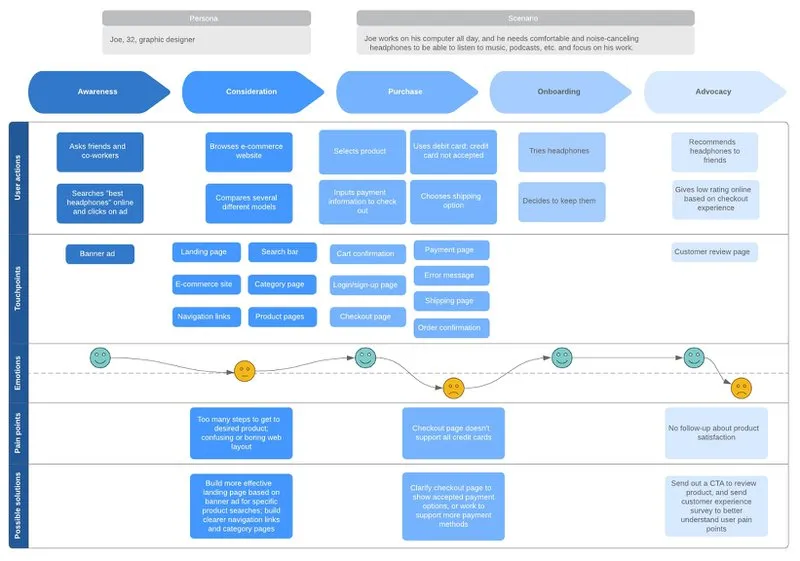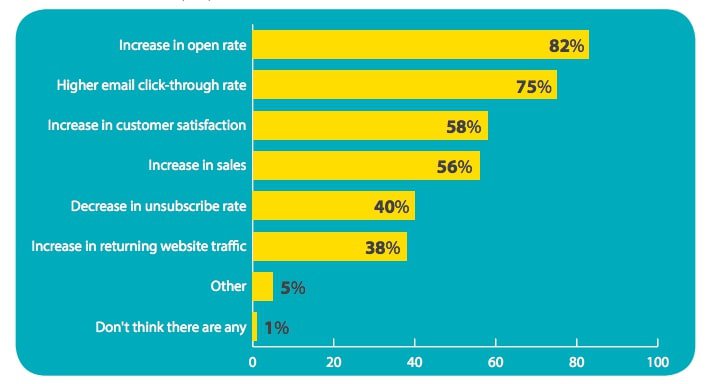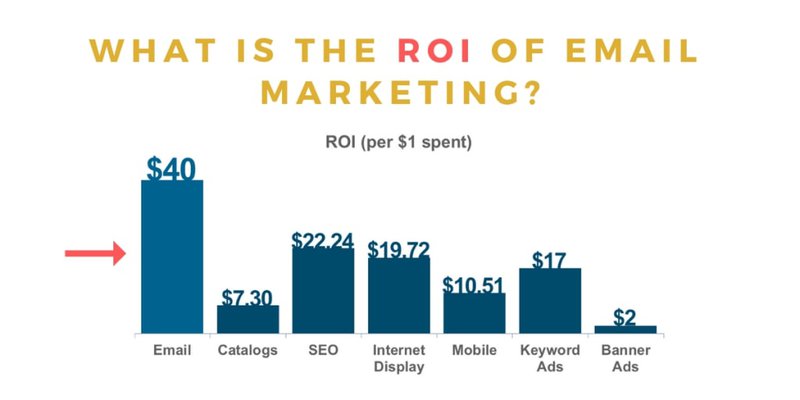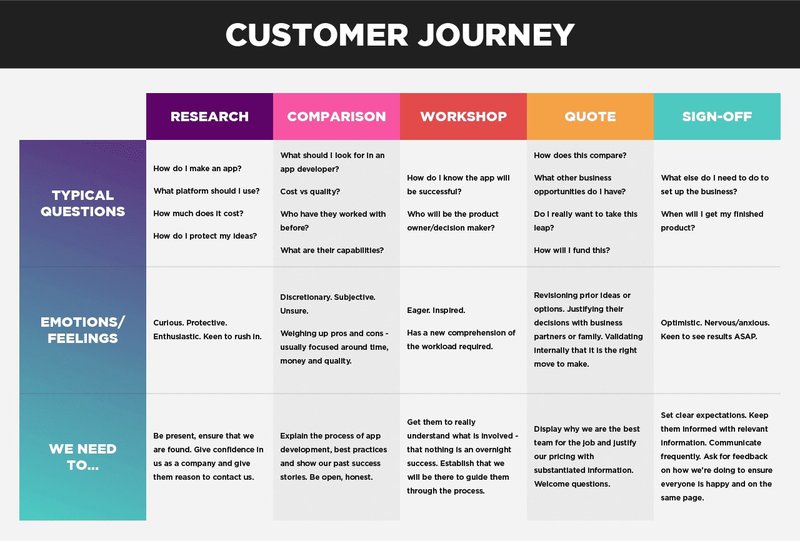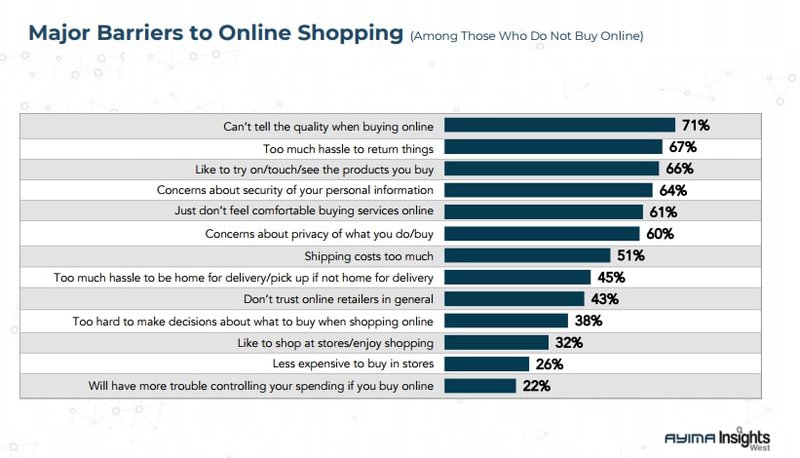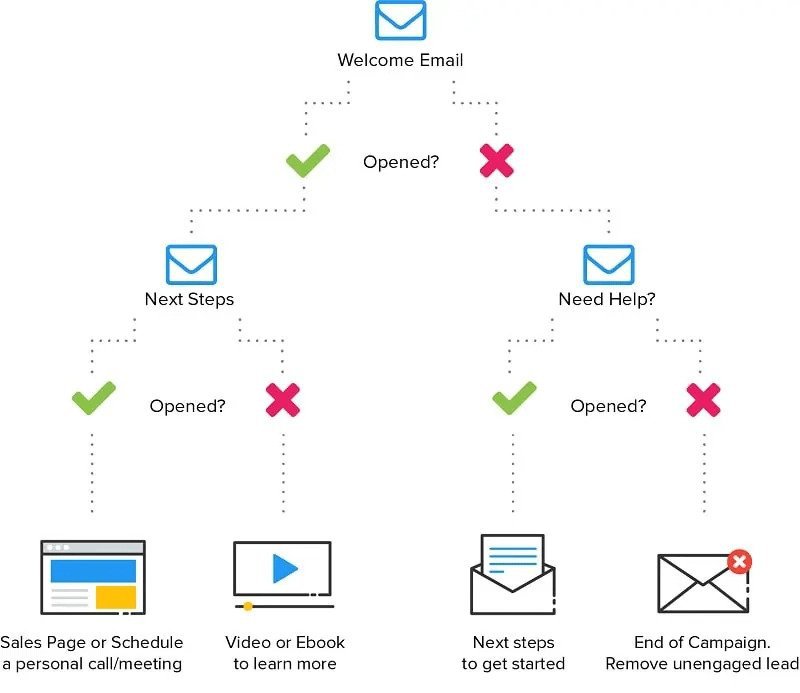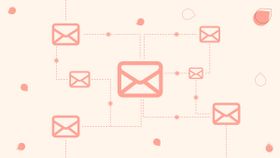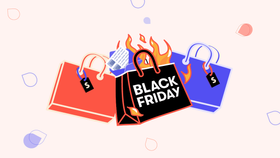How to Create An Email Marketing Journey That WORKS [Guide]
A strong and intentional strategy for each customer's email marketing journey is what sets you apart from the amateurs. See these tips, metrics, and examples!
Updated November 5, 2024
![How to Create An Email Marketing Journey That WORKS [Guide] main image](https://entail.mayple.com/en-assets/mayple/64f6dd20bf8b292a46ab9d39_2011200x675mayplecc17817101_bb7b2e73dd6ea4b9384c86939e49d5b2_2000-1699518307753.jpg)
Imagine you've just been introduced to someone. You exchange names, then don't say another word to each other for five minutes. The other person starts walking away, and you call their attention, only to ask them for a favor.
Not an ideal first impression!
Digital marketing makes it easier to cast a wider net than ever before – but it also makes it easier to be impersonal, allows your customers to get distracted, and makes them feel like they’re just another name on your list.
Email marketing journeys can provide a solution to this and add a more personal touch to the customer experience through automated emails.
How to build a customer-centric and effective email journey that connects your brand to the right audience and drives sustainable growth for your business?
Keep reading to find out.
What is an email marketing journey?
In a nutshell, an email marketing journey is an automation that sends emails when customers do specific actions. The main advantage of building an email marketing journey is meeting subscribers where they are on the customer journey map, giving them what they need and when until they become loyal customers.
You can send this type of marketing email to educate your customers about your products, celebrate their milestones with exclusive offers, request customer feedback, or inform them about other special discount events at your company.
Top reasons to invest in email journeys
Email is one of the best communication channels you can use to acquire new customers, build loyalty, and reach your business goals. Some of the most important benefits of building email journeys include:
Enhanced email personalization
Email inboxes (and other acquisition channels) are more cluttered and crowded than ever. To stand out, you need to personalize your emails and make your marketing feel like a two-way communication instead of a monologue.
Email journeys allow you to deliver exclusive content that improves user experience, enriches your email strategy with data, and speaks directly to your recipients' pain points and interests. Adding all these ingredients to your marketing strategy will help you increase the likelihood of engagement and conversion.
Pro tip: Want to personalize your messaging? Embed a video into your emails.
Increased engagement
Email fatigue is real, but well-crafted email journeys keep subscribers engaged over an extended period. By delivering value-driven content and gradually building a relationship at every customer touchpoint, you avoid overwhelming recipients and can maintain their attention.
Improved conversion rates
Guiding leads through a journey addresses their questions and concerns at each stage, building trust and confidence in your brand. This trust translates into higher conversion rates as recipients are more likely to take the desired action.
Moreover, trying to sell to people who are just getting acquainted with your company is likely one of the easiest ways to push customers away. According to some studies, 95% of people who enter a website are not ready to buy – so it's essential to build a good email strategy based on nurturing, personalized emails, and tactics that treat email subscribers as humans.
How to create and implement an email journey
Implementing email journeys takes some careful planning and execution. Here are the steps you need to take to include relevant emails in your automation:
Segmentation
Effective segmentation ensures that your emails reach the right audience with content that resonates. By analyzing customer data, you can divide your subscribers into groups based on demographics, behaviors, or preferences, allowing you to craft tailored messages that connect on a personal level.
Content mapping
Once segmented, plan relevant content for each stage of the journey. Start with an engaging onboarding message, and gradually introduce more complex information and calls to action as the journey progresses to ensure a seamless transition from one email to the next.
Automation
Modern email marketing platforms offer automation features that streamline the execution of email journeys. These email tools allow you to schedule and send emails based on triggers such as user actions, ensuring that each recipient receives the right email at the right time without manual intervention.
Email journey metrics to measure
Email journeys can be measured the same way any other email marketing efforts are measured. The basic metrics to follow include:
- Click-through rates: This metric indicates the effectiveness of your content, links, and calls to action. By tracking the percentage of recipients who clicked on links within your emails, you gain insights into which content resonates most and drives engagement.
- Open rates: The open rate reflects the appeal of your subject lines and sender name. A strong open rate indicates that your emails are grabbing recipients' attention, while a low rate may signal the need for improvements in these areas.
- Bounce rates: Bounced emails can result from invalid email addresses or technical issues. By monitoring bounce rates, you can maintain a clean and accurate email list, ensuring that your messages reach their intended recipients.
- Subscribe rates: Tracking how many new subscribers you're gaining allows you to gauge if your audience thinks you're sharing helpful content. A high subscribe rate can also show people trust you enough to give you their email addresses.
- Unsubscribe rate: While unsubscribes are natural, monitoring this rate helps you understand the impact of your email content and frequency. A sudden increase in unsubscribes may indicate that your emails are not aligning with recipients' expectations.
How to define your customer journey
Most customer journeys follow the same basic structure, but since every business has different needs and goals, it’s important to customize your journey accordingly. And it starts with knowing...
...The benefits of building a customer journey
Identifying your buyers' journey isn't an easy task, but it comes with a long list of advantages:
Improved conversions
Tailoring emails to different stages of the journey enhances conversion rates. By identifying recipients' specific needs and concerns at each stage, you can address them directly, increasing the likelihood of successful conversions.
Effective email marketing
Aligned emails resonate better with recipients. When your emails mirror the recipient's journey, from awareness to purchase and beyond, they create a cohesive brand experience that nurtures relationships and drives results.
Efficient social strategies
Insights gained from mapping the customer journey can inform your social media strategies. Understanding where your audience is in their journey helps you craft content that aligns with their interests and needs on each of the social channels they visit, which will result in more relevant and engaging social posts.
Better ROI
Targeted emails lead to higher returns. When your emails are closely aligned with recipients' needs and preferences, they are more likely to take the desired actions, whether it's making a purchase, signing up for a webinar, or sharing your content.
More referrals
Satisfied customers from an optimized journey are more likely to refer others – and that can be an excellent lever for business growth. When you exceed expectations at each stage, you retain customers and turn them into brand advocates who willingly promote your products or services.
Reduced sales cycles
Guided customers make quicker decisions. As you address questions, concerns, and objections at each stage of the journey, you reduce the time it takes for recipients to move from awareness to purchase, streamlining the sales process.
More successful loyalty programs
Customer journey mapping for email marketing will inform your overarching marketing strategy – and that can increase customer satisfaction and create a loyalty program your audience will actually love.
The relationship between email marketing and your customer journey
Email marketing and the customer journey are intricately linked. Your customer journey defines the customer touchpoints ideal buyers go through on their path to conversion – and your email strategy should feed precisely into these critical touchpoints to offer potential buyers what they need when they need it.
Of course, how you structure your customer journey depends on a lot of factors, like your business model, for example, since the buying process looks different in a SaaS vs. a beauty shop.
The basic elements of the buyer’s journey
Generally, customer journey maps are built on the following structure:
- Awareness stage: At the awareness stage, the potential customer doesn't yet know about your product. They're often unaware of there being a solution to their problem at all. Use compelling storytelling and valuable content to create a positive first impression that sparks curiosity and interest in recipients.
- Acquisition stage: As leads become more solution-aware, email marketing helps seal the deal. Send targeted emails that provide additional information, address any remaining concerns, and present irresistible offers encouraging recipients to act.
- Consideration stage: During the consideration stage, recipients weigh their options. Email content should highlight your unique value proposition, provide testimonials or case studies, and offer solutions to potential challenges.
- Purchase stage: In the purchase stage, emails serve as a final push towards conversion. Showcase limited-time offers, provide any information needed for making a purchase, and offer reassurance to alleviate any remaining doubts.
- Retention stage: Post-purchase emails nurture customer relationships and encourage repeat business. Share relevant content, exclusive offers, and personalized recommendations to keep customers engaged and loyal.
- Re-engagement and brand loyalty stage: Re-engagement emails can reignite interest as customer engagement wanes. Present new offerings, showcase product updates, or offer special incentives to win back inactive customers and remind them of your value.
It is important to mention that, although a customer journey map can inform your general and email marketing strategy, the actual buying journey will almost never follow a cookie-cutter trajectory. Taking the time to understand the customer experience and journey is a must to know how your customers buy.
To get more ideas about how to engage with your email customers, and which channels to combine with email, check out our list of the top email marketing books.
How to identify your customers’ journey
Aside from the customer journey stages, you must also be aware of the obstacles that prevent customers from moving to the next stage. The following barriers are just as true for email marketing as for other acquisition channels (like social media marketing):
- Motivational barriers: These barriers are related to customer desires and wants. If someone feels they don't want or need your product, they won't move past the awareness stage. To overcome this type of obstacle, you need to create rapport with your audience, showing them you understand their situation and pain points, and how your product addresses that.
- Experiential barriers: This type of barrier is not about you, but issues customers have had in the past with products or services in the same category. To overcome this type of barrier, you need to show how you're unique. This is not done by outright saying "We're different!" but by punctually providing the proof and examples that point to this claim.
- Temptation barriers: Running a business online comes with many benefits, as well as challenges brick-and-mortar stores never had to face before the advent of the digital era. For example, customers are constantly tempted by competitors who are just one click away from you. To combat this type of barrier, your marketing needs to emphasize your competitive advantages and the specific solutions you provide. Exclusive offers and time-sensitive promotions can also help overcome this barrier.
Examples of email marketing journeys
Email marketing journeys come in many forms, and they frequently intertwine, because you'll remember that actual buyer journeys are almost never linear. Here are some examples of email flows you can include at critical touchpoints in your shoppers' buying process:
Welcome series
A welcome series engages new subscribers right from the start, ensuring you offer an excellent customer experience, right from the initial touchpoint. Craft a series of emails that introduce your brand, provide a glimpse of your best content, and offer a warm welcome to foster a positive first impression.
Drip email campaign
A drip campaign aims to educate your target audience and move them toward the next stage of the customer journey. This type of campaign is excellent for nurturing leads over time. The main idea is that drip emails follow the customer along their journey. For instance, your drip series could look like this:
- First email: Talk about your customer's issues and show them you understand the larger context.
- Second email: Offer valuable content or resources that help address customer’s needs and challenges.
- Third email: Provide an exclusive offer or a limited-time promotion to encourage customers to convert.
Cart or browse abandonment campaign
When recipients abandon their carts or leave your website without purchasing, automated emails can help recover potentially lost sales. Cart abandonment emails are sent to someone who added products to their cart but didn't complete the purchase, and browse abandonment emails are sent to someone who browsed a product or a product page but did not add anything to the cart.
These messages remind potential customers of the items they are interested in, while often offering incentives like discounts or free shipping.
Special occasion promotion
Celebrate events, holidays, or milestones with personalized offers that resonate with recipients. Examples of such emails include Black Friday campaigns, St. Patrick's Day emails, Mother's Day emails, Labor day emails, and so on. These communications create a special connection to your audience and present offers on purchases they might have made anyway.
Email journeys: from unknown to being their go-to
Email is one of the highest ROI marketing channels in which you could invest money. To be more specific, some studies show you get $40 for each $1 you spend on email marketing campaigns – an impressive stat for every business owner and email marketer.
Building email journeys is essential to making the most out of your marketing efforts. It's one of the most personalizable, easiest to control, and effective ways of taking buyers through critical touchpoints: from education to persuasion and building loyalty.
Well-built email marketing journeys also help you get honest customer feedback, drive priceless, valuable insights, improve your products and services – and grow your business like never before.
Want to make sure you reap all the benefits email marketing and email journeys have to offer? Hire an email marketing agency vetted by Mayple! Contact us today and we'll match you with the best one for your industry.
